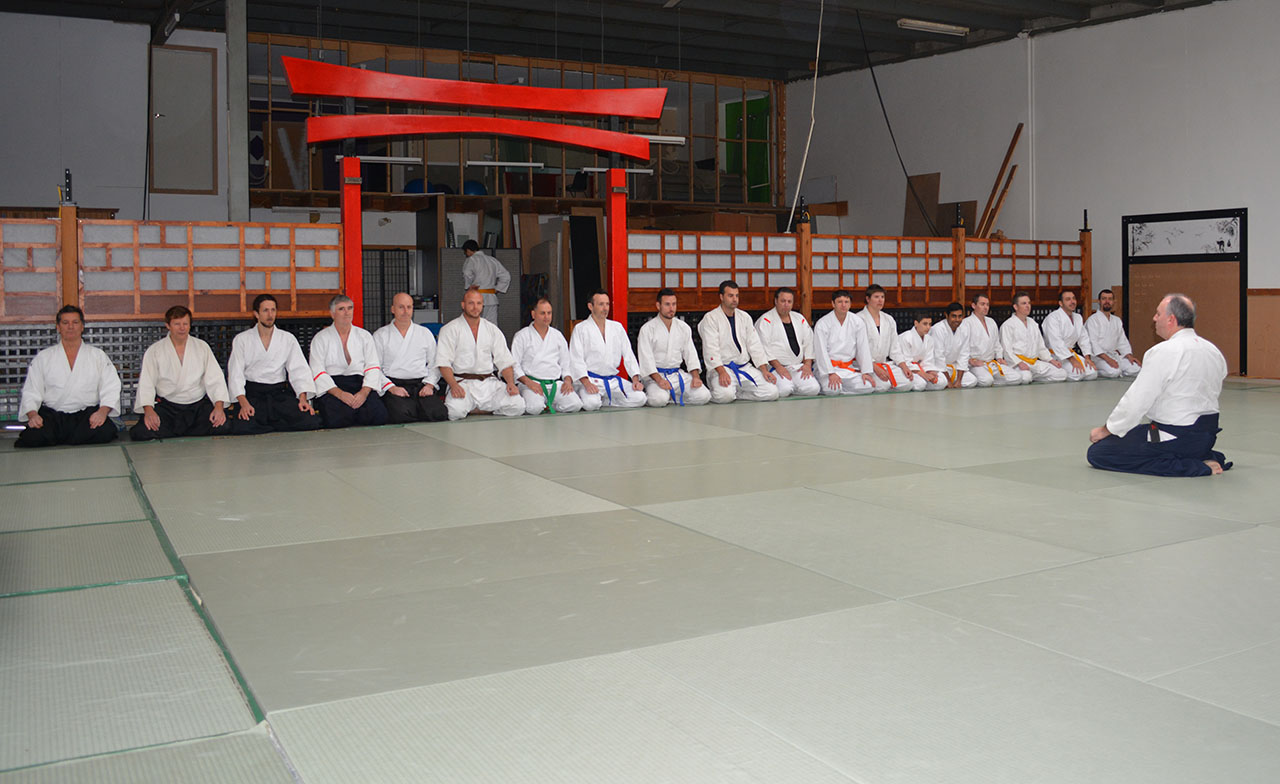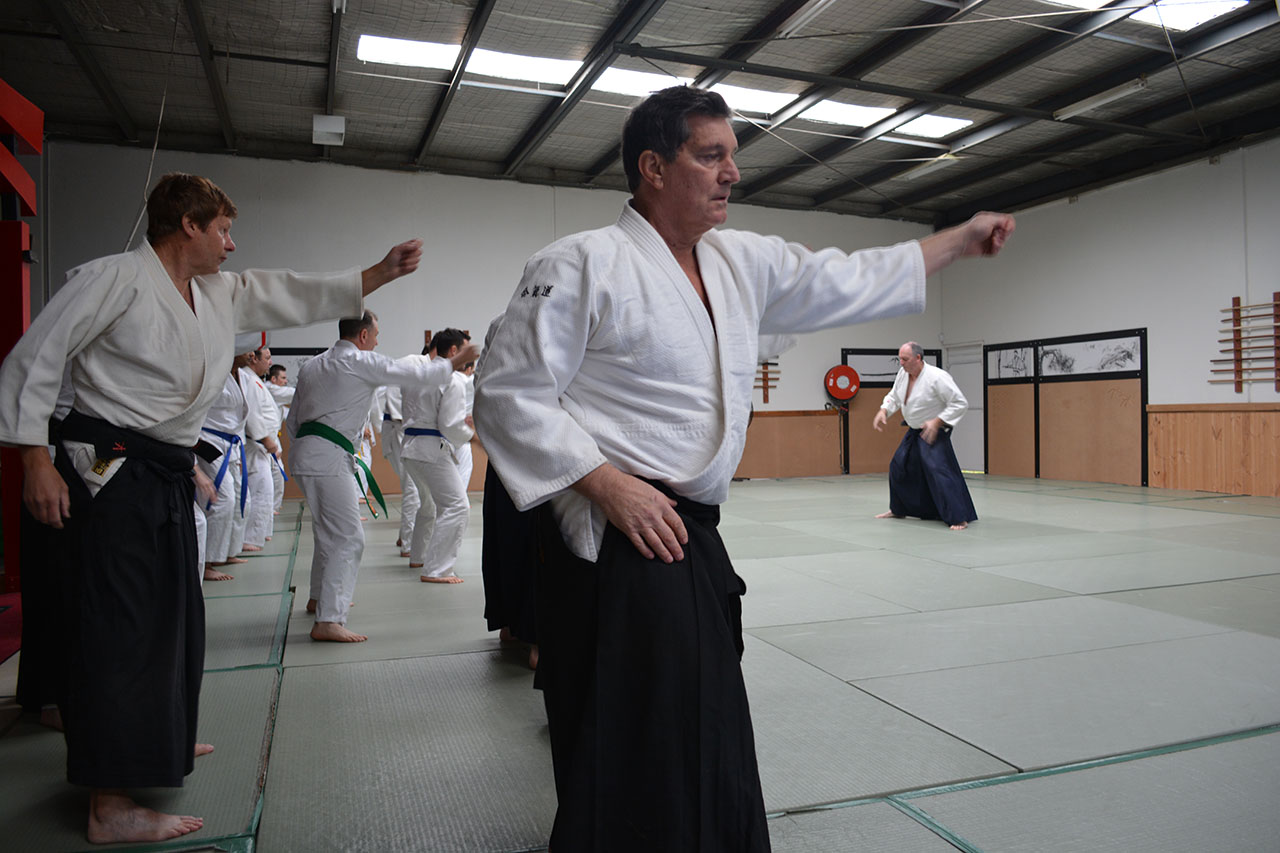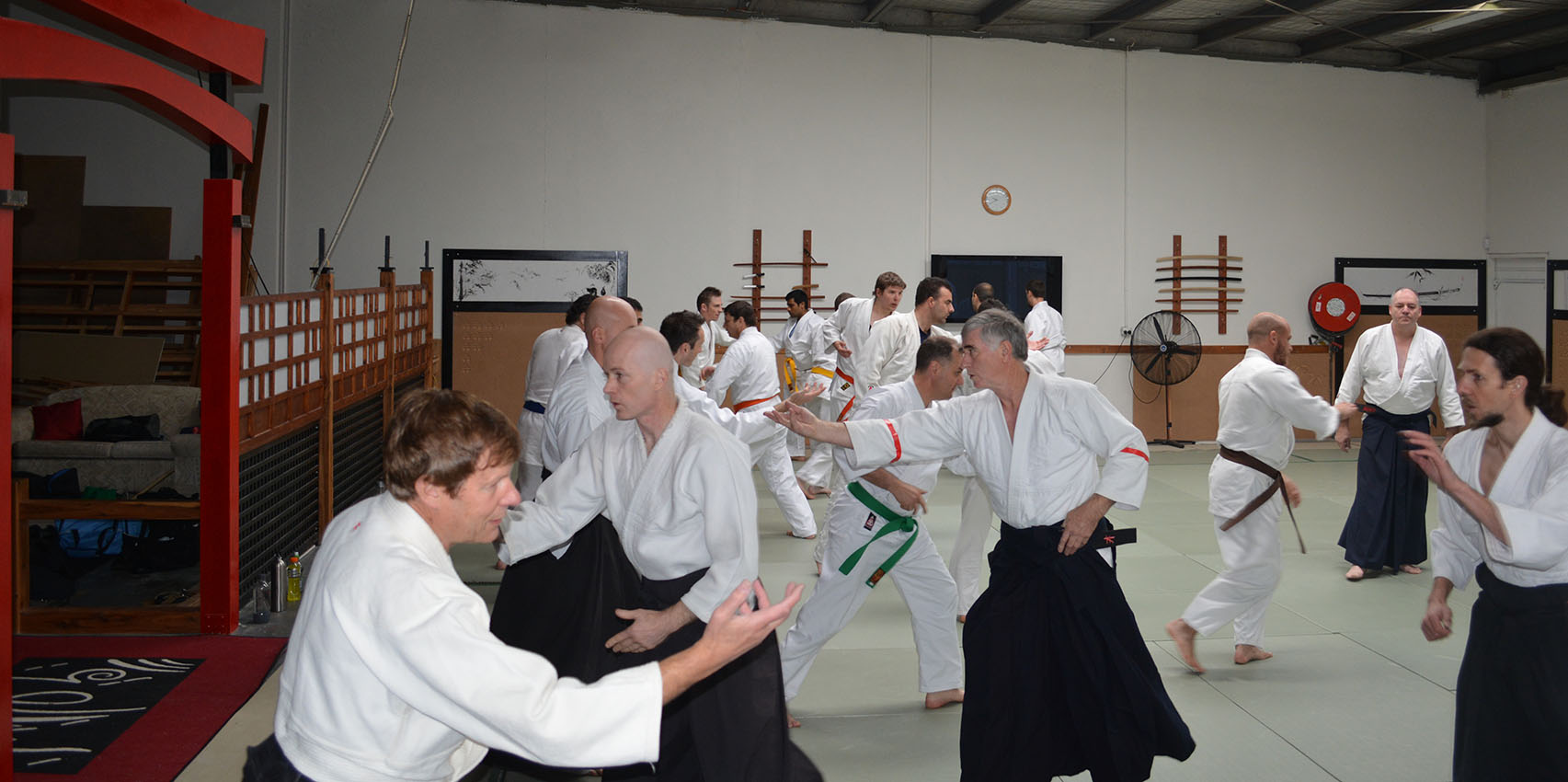New Students
New or prospective students are always welcome to contact us for information or simply turn up at the dojo to train or watch. The instructor or senior students will be happy to answer any questions you have before or after the class. If you intend to train it is best to arrive 10 or 15 minutes before the scheduled start, as you will need to fill out a waiver prior to your first class. Wear loose comfortable clothing, and be aware that it may be gripped so tougher is better.
The first class is free – see our class times page for the schedule of classes.



If you have never trained in the martial arts there is no need to be nervous. The atmosphere in the dojo (place of training) is friendly and non-competitive – the latter is something that distinguishes Aikido from many other martial arts. There are some traditional aspects to training including simple dojo etiquette, but as a new student you don’t need to be concerned about breaking any rules!
If you wish to join the class simply follow along. Senior students and the instructor will advise you and help you with many of the exercises and techniques. Classes begin with a bow – a gesture of respect without religious connotations – followed by exercises to test the body’s readiness to train, calm the mind, and refresh ki (you can read something about ki on our ki fusion and articles pages). You may wish to conduct your own additional warmup on the mats before class – just make a small bow before entering the training area.
Following the exercises the Sensei (instructor) will demonstrate a technique, then in most cases students will practice the technique in pairs, taking turns to be the attacker. We do not compete, instead helping each other to learn by passing on knowledge, applying increasing resistance to test the techniques, and experimenting to find a harmonious path that does not conflict with the partner’s strength.
Unlike in some dojos, senior, intermediate and beginner students mix and train with each other, so you will have the opportunity to learn from black belts and other experienced students from the first class.
Training is always conducted at a level appropriate to the student – you are never pushed to go beyond what you feel capable of and training partners take utmost care to avoid injuring each other.
Classes continue with different techniques demonstrated and practiced, responding to a variety of attacks. In most classes there will also be time to practice more flowing training with multiple attackers or a succession of rapid attacks. Some classes involve practice with training weapons such as bokken (wooden sword), jo (wooden staff) or tanto (wooden knife). There is very little kata (choreographed patterns of movement) training in Aikido, but there are some weapons kata.
In most classes you will work up quite a sweat. Initially your body will likely feel quite sore the next day, even if you are quite fit, since Aikido uses muscles that aren’t often worked hard. This is quite a satisfying feeling for most people! The training helps to develop core stability and strength, as well as providing cardiovascular training. Students usually go home feeling relaxed, clear of mind and stress free, often even energised. You can read more about some of the benefits of Aikido here.
